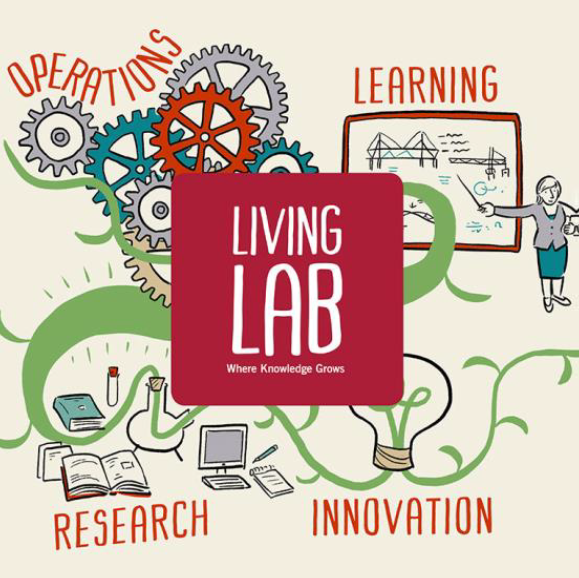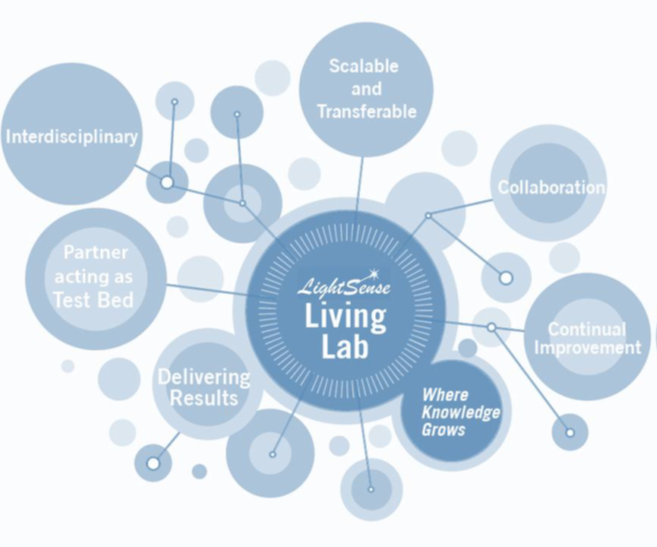Living Labs are spaces for the information and communication technology (ICT) society. They originally emerged in the nineties from the need to think about how technological innovations could be adapted to people and to society.
Within living labs, users shape the innovation in their daily real-life environments, whereas in traditional innovation networks or labs, users are observed and their insights are captured and interpreted by experts.
Living Labs usually include two primary elements:
• A real-life test and experimentation environment
• Users who are aware that they are co-involved in the innovation process.
They are used to coordinate innovation projects, from the collection and generation of ideas to their manifestation in the creation of new products and services that were subsequently introduced to the marketplace or society.
Living Labs gather information, generate and validate ideas, concepts, designs and innovation. They constitute an instrument created to assist innovation processes from start to finish and this capability of providing holistic support and follow-up is fundamental.

Living Lab Purposes
| High-level issues | Identified characterizing purposes |
| Living Lab contributions to the innovation and development process | 1. Context research (To investigate the context of use) 2. Discovery (To provide insight into unexpected ICT uses and new service opportunities) 3. Co-creation (To involve users as co-creators) 4. Evaluation (To evaluate or validate new ICT solutions with users) 5. Technical testing (To conduct technical testing in a (semi) realistic context of use) |
| The Living Lab context | 6. Familiar context (To experience and experiment with ICT solutions in contexts familiar to users) 7. Real-world context (To experience and experiment with ICT solutions in real-world contexts) |
| Characteristics of Living Lab studies | 8. Medium- or long-term (To conduct medium- or long-term studies involving users) 9. Large scale (To try out ICT solutions with large numbers of users) |
Importance of Living Labs
• It is very hard for a single actor to find a solution when approaching complex challenges that exist in an evolving real life context
• Living labs with network structures based on extensive knowledge and information exchange and collaboration between multiple actors lead to radical innovations
• Living labs with centralized network structures tend to achieve more incremental innovations
Benefits for all Participating Organizations
• Living Labs will encourage the meaningful involvement and effective cooperation among both the members of the consortium and all related stakeholders
• Participating organizations will have the chance to create useful alliances
• Future development of the energy market
The LightSense Project Living Labs
The type of Living Lab that will be applied during the LightSense project will be the use of Living Labs as open innovation platforms. The Living Lab will serve as a real-world environment for collaboration among stakeholders in the value chain of ICT production. Stakeholders (firms, public agencies, universities, institutes and people) will be invited to join the project in order to collaborate for the creation, prototyping, validating and testing of new services, products and systems in real-life contexts.
The project will include synergies (see Figure below), based on the University of Leeds Living Lab Sustainability concept (University of Leeds sustainability, 2018). It is very important to understand that Living Labs are all about collaboration of different actors. These actors sometimes cannot identify from the beginning their role but eventually through their participation in the Living Labs their input and impact is of high importance. Various actors have different background and different levels of knowledge and understanding and these potential collaborations can have a greater impact on a larger scale that what was originally expected.
